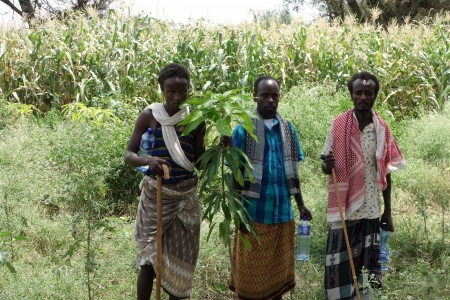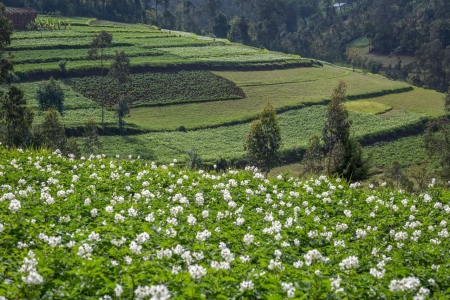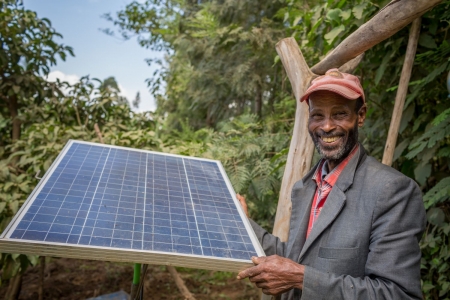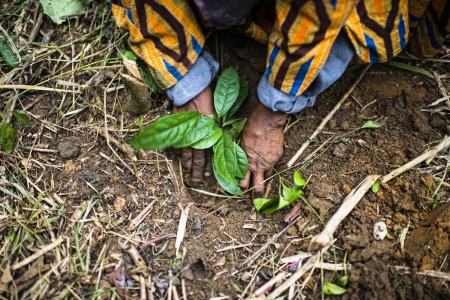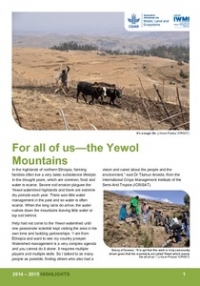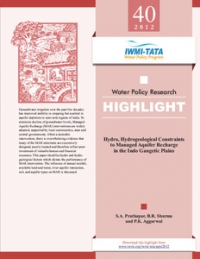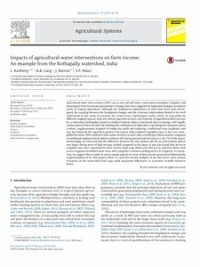With significant advances on restoring degraded landscapes, and new policies on soil strategies and water technology, cross-sectoral and cross-scale approaches are showing results in Ethiopia. Together, they can greatly enhance the impacts of agricultural investments the country is already making and may make in the future.
CGIAR Research Program on Water, Land and Ecosystems (WLE) and partners have supported research, capacity strengthening and policy engagement to help Ethiopia deliver more sustainable soil and water management.
Across Ethiopia, the rugged and degraded landscapes, the struggle for sufficient irrigation, and the enormity of environmental deterioration are clearly visible. The country has over 70 million hectares of arable land, and only 12 million hectares are under cultivation. WLE estimates the cost of soil degradation to Ethiopia at $4.3 billion annually. CIAT/WLE research has demonstrated that soil and water management measures, when implemented effectively, can reduce soil erosion by up to 75% and enhance base flow of water by up to 40% with associated positive effects on food security.
WLE and partners are beginning to integrate cross-sectoral and cross-scale initiatives in Ethiopia to create greater synergies for a more sustainable agricultural future.
First, there’s water. The Ethiopian Prime Minister and Ministry of Finance have approved a policy to make all water technologies tax exempt, with the government crediting IWMI/WLE supported work on irrigation technology and a supply chain analysis influencing this change in policy. IWMI/WLE has been further requested to assess the impacts of this policy change on smallholder farmers. And a new ICRISAT/GIZ/WLE innovation using a basic technology – water spreading weirs – to help pastoralists turn dangerous floods into a much needed source of irrigation. This has potential to scale out to similar areas across the country.
On soils, in 2017 WLE researchers helped the Ethiopian Ministry of Agriculture and Rural Development develop a revised ‘Ethiopian Soil Strategy’ to target soil fertility management interventions. WLE researchers won the Bologna Sustainability and Food International Award for developing approaches to screen and scale-up locally adapted, drought resistant farmers’ varieties of durum wheat.
And at a landscape level, WLE’s work with partners on integrated landscape management through the Africa RISING program demonstrated that using its tools and procedures to target interventions can cut soil erosion by up to 75% and improve food security. CIAT/WLE and partners developed a framework to guide landscape-level interventions. The procedures have been co-implemented in eight highland watersheds covering 1,500 ha. Ethiopian agencies at federal, state and local levels implementing the Sustainable Land Management Program (SLMP) are now adopting these innovations, aimed at restoring 15 million hectares by 2025.
An integrated watershed approach has also proven successful in the Yewol mountains highlands where free grazing of cattle and unreliable rain affected the productivity of lands, contributing to out-migration and food shortages. A vast watershed initiative was started by concerned local researchers with the support of ICRISAT/WLE and the government. Communities have worked together to capture rainfall, revitalize soil, bring in new livestock breeds and improve market access. And now the initiative is being eyed by other areas in Ethiopia.
Together, these achievements demonstrate the benefits of implementing well-targeted and well-managed soil and water management interventions at a landscape scales, while supporting policy-makers to use evidence to provide incentives for new solutions.
With other ongoing WLE initiatives on irrigation business models and soil analysis, Ethiopia will be well placed to ensure that benefits from its investments are maximized. And this same integration process has great potential in other countries across the developing world.
Adapted from a WLE Annual Report outcome case study.

